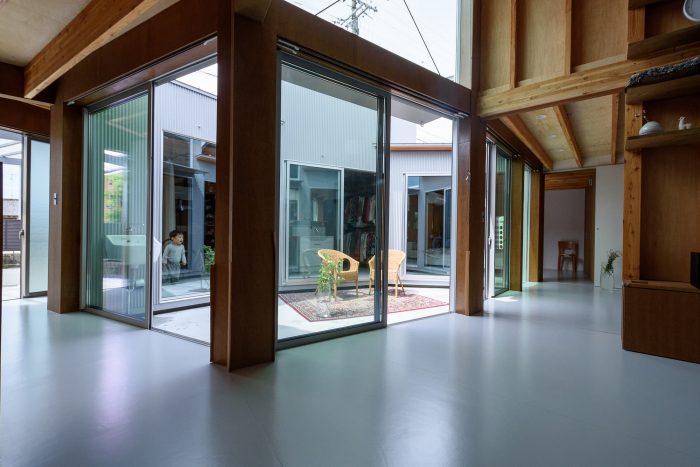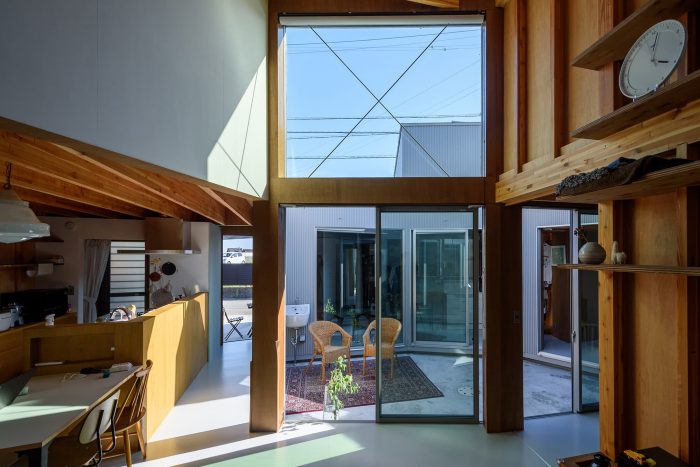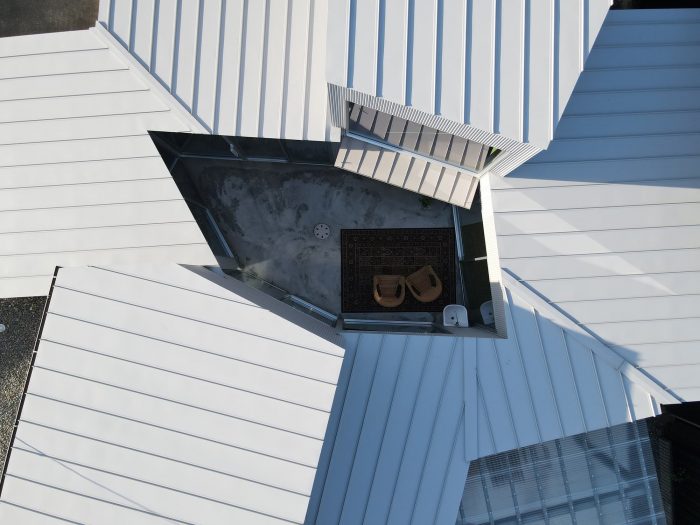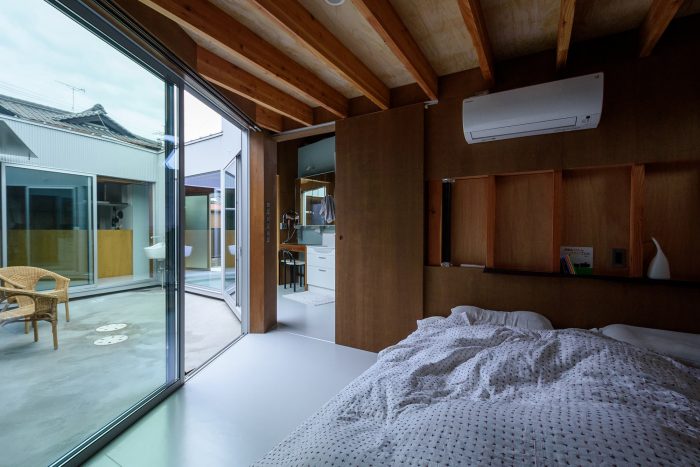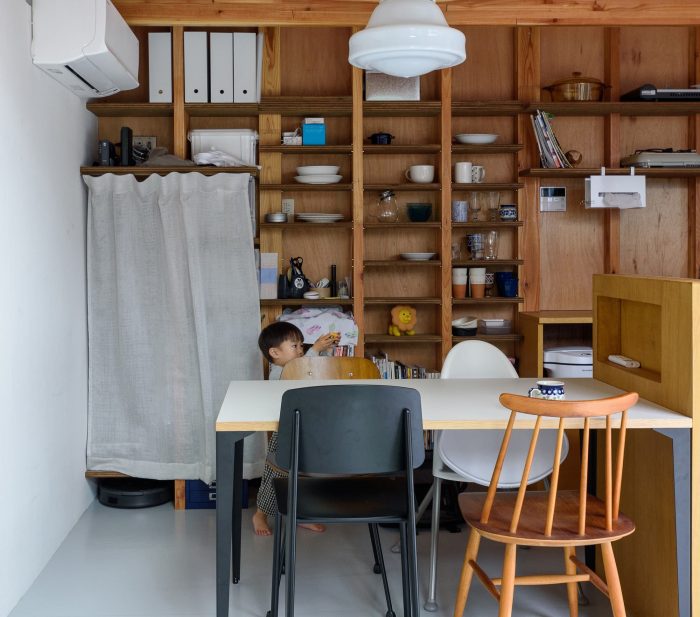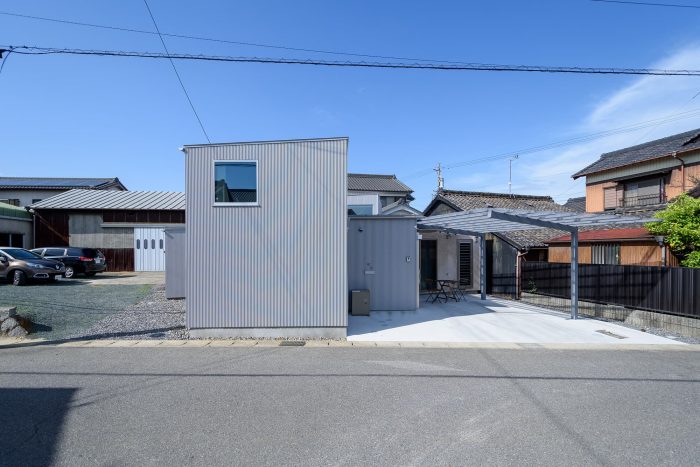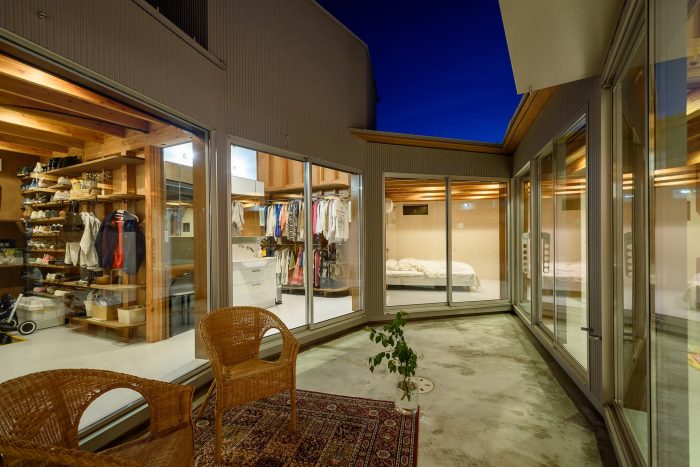在城里建房,房与房之间开放–在爱知县郊区建的房子。房主有大量的房屋图片,包括家具、照明、各种装饰、设备、存储想法和窗户区域的使用,这些图片是他从SNS和杂志上收集的。这些图片并不总是一致的,有些是光秃秃的混凝土外墙,有些是木板外墙,有些是很酷的极简主义内饰,有些则是混乱的内饰。方便合理的存储理念和有品位的古董家具也同样一致。这些都是对理想生活的要求的片段,我知道在建筑完成后,它们会继续逐日变化。因此,我们没有试图通过从大量的图像中进行选择来组成一个空间,而是在设计过程中开始考虑各种元素将在其中泛滥并相互产生共鸣的框架。
Build room in town, open room to room – A house built in the suburbs of Aichi Prefecture. The owner had a large number of images of the house, including furniture, lighting, various finishes, equipment, storage ideas, and use of the window area, which he had collected from SNS and magazines. The images were not always consistent; some were of bare concrete exteriors, some were of wood-paneled exteriors, some were of cool minimalist interiors, and some were of chaotic interiors. Convenient and rational storage ideas and tasteful antique furniture were equally aligned. These were fragments of requests for an ideal life, and I knew that they would continue to change day by day after the completion of the construction. Therefore, rather than trying to compose a space by selecting and choosing from a large number of images, we began the design process by considering the framework in which the various elements would overflow and resonate with each other.
场地是一个安静的住宅区,两边都是低层住宅。附近的十字路口并不是相互正交的,城镇仍然保留着传统的不规则形状的城市街区。该场地也有一个平行四边形的形状。起初,我们考虑采用平行四边形的体量,但我们觉得不自然,除了场地和体量之间的关系,我们还需要考虑如何刻画内部。在我看来,城镇的结构和房子的结构是不连续的。
The site is a quiet residential area lined with low-rise houses. The intersections in the neighborhood are not orthogonal to each other, and the town still retains its traditional irregular shape of the city block. The site also has a parallelogram shape. At first, we were considering a parallelogram-shaped volume, but we felt it unnatural that we needed to think about how to carve out the interior, apart from the relationship between the site and the volume. It seemed to me that the structure of the town and the structure of the house was not continuous.
因此,我们把体量分为几个卷,每个卷都应该直接面对场地的边界线。考虑到客户的要求,体量的数量被设定为7个,7个房间面向与城镇的边界。每个房间的横梁都从场地边界后退,一个庭院位于场地中心附近,作为远离城镇的空白空间。院子里的房间是根据城市街区的特点集合而成的。为了预期在房间之外创造各种区域,所有与庭院相邻的表面都是由玻璃制成的,以连接各个房间之间的不同距离。
Therefore, we divided the volume into several volumes, each of which should be directly opposite the boundary line of the site. The number of volumes was set to seven in consideration of the client’s request, and seven rooms were built facing the boundary with the town. The beams of each room are set back from the site boundary, and a courtyard is located near the center of the site as a blank space away from the town. The courtyard is a collection of rooms that are based on the characteristics of the city block. In anticipation of the creation of various areas beyond the rooms, all the surfaces that border the courtyard are made of glass to connect the rooms at various distances from each other.
换句话说,这些房间被相互打开了。此外,通过使用三种类型的内墙饰面(1.柱子暴露,2.胶合板OS涂层,3.胶合板EP涂层),同时避免按房间统一,我考虑了一种方法,使远处房间的墙壁可以相互连接。通过这样做,人们可以感觉到自己的房间和院子对面的房间是在同一个区域,而且远处的房间比隔壁的房间更近。四个饰面,三个在内墙,一个在外墙,在每个位置创造了各种颜色,就像CMYK创造的墨水一样。七个房间的构成被许多地方的积累所取代。在这里,散落在房间里的家具、灯光、杂七杂八的小玩意和玩具也作为空间的元素参与其中,并作为日常生活的一部分相互产生共鸣。
In other words, the rooms were opened up to each other. In addition, by using three types of interior wall finishes (1. columns exposure, 2. plywood OS coating, 3. plywood EP coating) while avoiding unification by room, I considered a way in which the walls of distant rooms could be connected to each other. By doing so, one can feel that one’s room and the room across the courtyard are in the same area and that the distant room is closer than the room next door. The four finishes, three on the interior walls and one on the exterior walls, create a variety of colors in each location, like the ink that is created by CMYK. The composition of the seven rooms is replaced by an accumulation of many places. Here, furniture, lighting, miscellaneous knick-knacks, and toys scattered around the rooms also participate as elements of the space and resonate with each other as part of daily life.
我在设计这所房子时,思考了存在于房间外的小镇的结构和历史,以及与房间内无尽延伸的时间流逝一起生活的可能性。房子的结构和饰面在不同层面上与这些元素相联系。这个房子是一个房间的集合,作为城镇景观和日常生活的交汇点。
I designed this house while thinking about the structure and history of the town that exists outside the rooms, and about the possibility of living with the passage of time that extends endlessly inside the rooms. The structure and finishes of the house are connected to these elements at various levels. This house is a collection of rooms as an intersection between the landscape of the town and daily life.
Architects: Takayuki Kuzushima and Associates
Area : 95 m²
Year : 2022
Structure : Komatsu Structural Design
City : Nishio
Country : Japan


